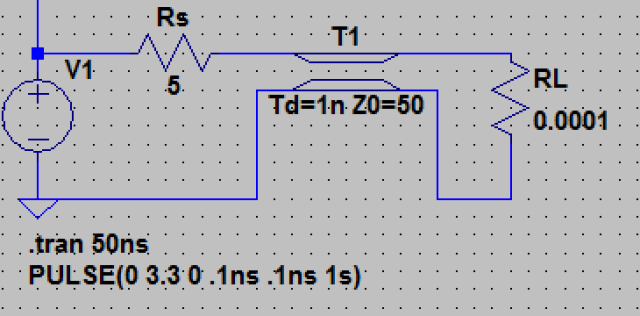I need some suggestions on how to develop a SPICE model for a computer data bus. Since each data signal is similar, I only would model one signal ("D0").
This is for some experimentation I am doing to understand the electrical load and behavior of a data bus on a microcomputer (IBM PC).
The data bus has a variety of devices connected - a couple static RAM chips, a ROM chip, a real time clock.
My first thought is to draw a wire that is the bus. I would connect a voltage source / switch on the left to represent the square wave used to excite the bus line. Then I would connect a capacitance and resistance in parallel (to ground) at a few places, with one per device.
I also need to add capacitance and inductance between each device on the model, to account for the PCB trace. For the PCB, I would use an inductance and resistance in series, with a capacitance to ground.
Is this an appropriate model?
To get the values: For the device I would get the pin capacitance from the device's data sheet. To get the value of the resistance, I would use Ohm's law and divide the voltage (5V) by the input current leakage from the data sheet.
For the circuit board, I need to find some formulas for resistance, capacitance, and inductance for some estimates of the trace geometry.
I am excluding effects between signals/traces on the PCB.
Based on the results of the simulation, I will decide on using bus drivers or passive components to terminate the bus signals, to improve signal integrity.
Anyone out there who has a solid foundation able to reinforce my thinking, or, point me in a better direction?


